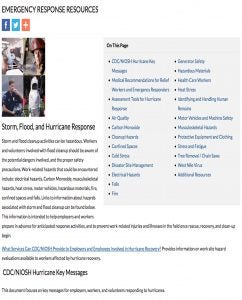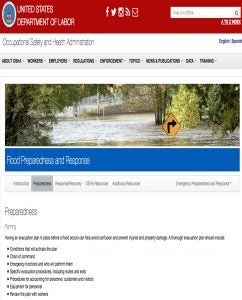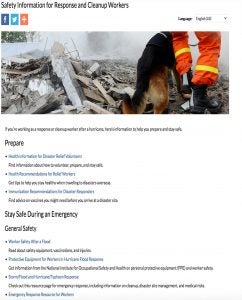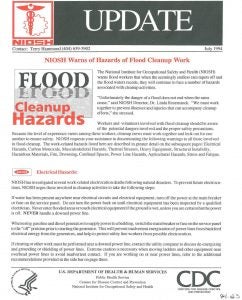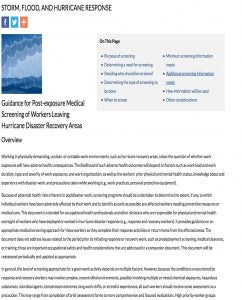Occupational Hazards
Hurricane response and flood cleanup activities are potentially hazardous. It is important that workers and volunteers involved with these activities are aware of these related potential dangers and the proper measures to protect their health and safety. In addition, employees working in buildings that had extensive water damage after major hurricanes and floods are at high risk of occupational exposure to molds. Work-related hazards that may be encountered include chemical hazards (e.g. carbon monoxide), molds, musculoskeletal hazards, heat stress and safety hazards (e.g., electrical hazard, fire, falls, structural instability and drowning).
East Carolina University has accumulated the following resources for employers, responders and other workers on protecting worker health and safety during all phases (before, during and after) of a natural disaster or emergency event. This information is intended to help employers and workers prepare in advance for anticipated response activities, and to prevent work-related illnesses and injuries in the field once rescue, recovery and clean-up begin.
